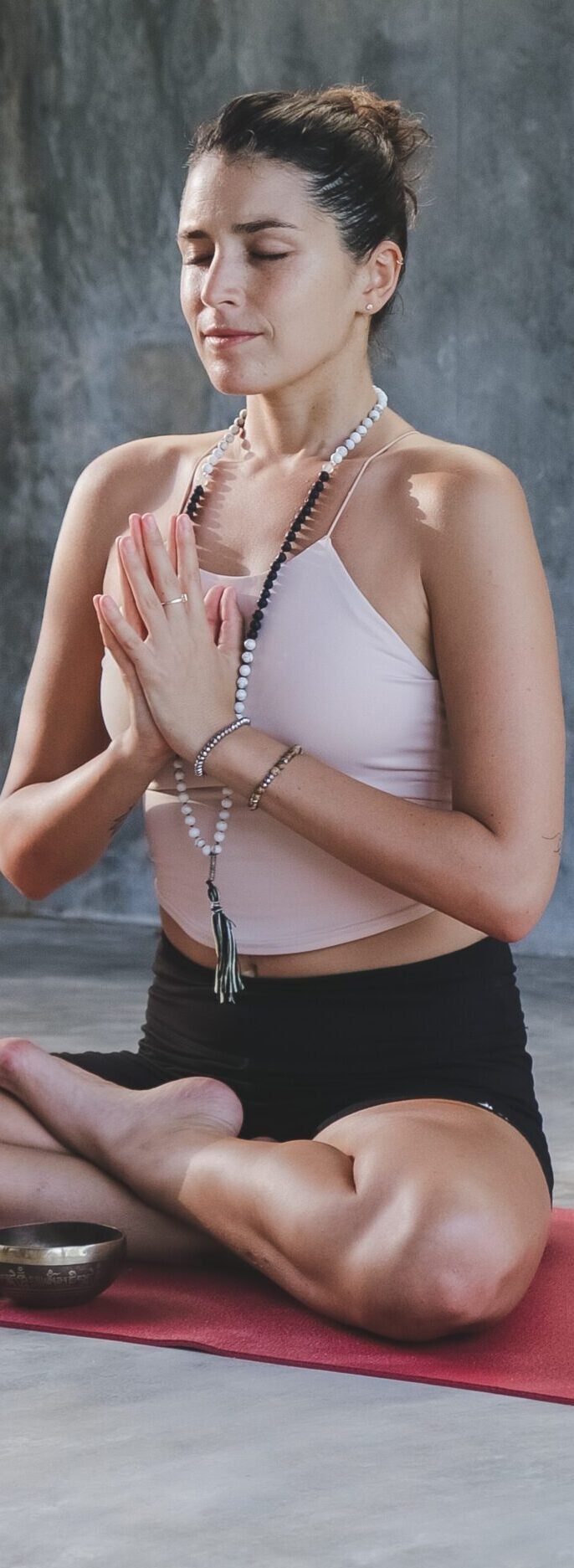
Breathing Techniques: Understanding and Benefits
Introduction
Breathing is an essential function of life that we often take for granted. It is an involuntary action that keeps us alive, but did you know that the way we breathe can have a significant impact on our physical and mental well-being? In this article, we will explore breathing techniques, how to practice them, and the numerous benefits they offer.
Understanding Breathing Techniques
Breathing techniques, also known as breathwork, are intentional exercises that focus on controlling and manipulating the breath. These techniques have been practiced for centuries in various cultures and have gained popularity in recent years due to their numerous health benefits.
There are several types of breathing techniques, each with its own unique approach and purpose. Some of the most common techniques include:
- Diaphragmatic Breathing: This technique involves deep breathing into the diaphragm, allowing the belly to rise and fall with each breath. It promotes relaxation, reduces stress, and improves overall lung capacity.
- Alternate Nostril Breathing: By alternating breathing through each nostril, this technique helps balance the body’s energy, reduces anxiety, and enhances mental clarity.
- Box Breathing: Also known as square breathing, this technique involves inhaling, holding the breath, exhaling, and holding the breath again in equal counts. It is effective in reducing stress, improving focus, and enhancing performance.
- 4-7-8 Breathing: With this technique, you inhale for a count of 4, hold the breath for 7, and exhale for 8. It is particularly helpful in promoting relaxation, improving sleep quality, and managing anxiety.
How to Practice Breathing Techniques
Practicing breathing techniques is simple and can be done anywhere, at any time. Here’s a step-by-step guide to get you started:
- Find a comfortable position: Sit or lie down in a position that allows your body to relax.
- Focus on your breath: Close your eyes and bring your attention to your breath. Notice the natural rhythm of your inhales and exhales.
- Choose a technique: Select a breathing technique that aligns with your goals and needs.
- Start practicing: Begin the chosen technique by following the specific instructions for that technique.
- Continue for a few minutes: Practice the technique for a few minutes, gradually increasing the duration as you become more comfortable.
- End with relaxation: Take a few moments to relax and observe any changes in your body and mind.
Benefits of Breathing Techniques
The benefits of breathing techniques extend beyond the physical act of breathing itself. Here are some of the key advantages:
- Stress reduction: Breathing techniques activate the body’s relaxation response, reducing stress levels and promoting a sense of calm.
- Improved focus and concentration: By bringing awareness to the breath, breathing techniques enhance focus and concentration, making it easier to stay present and engaged.
- Enhanced emotional well-being: Breathwork can help regulate emotions, reduce anxiety, and improve overall emotional well-being.
- Increased energy levels: Certain breathing techniques, such as Kapalabhati, can boost energy levels and invigorate the body.
- Better sleep: Practicing breathing techniques before bed can promote relaxation, improve sleep quality, and alleviate insomnia.
Conclusion
Breathing techniques offer a simple and effective way to improve our physical and mental well-being. By incorporating these techniques into our daily lives, we can reduce stress, enhance focus, and experience a greater sense of calm and balance. So take a moment to pause, breathe deeply, and unlock the numerous benefits that breathwork has to offer.
Learn More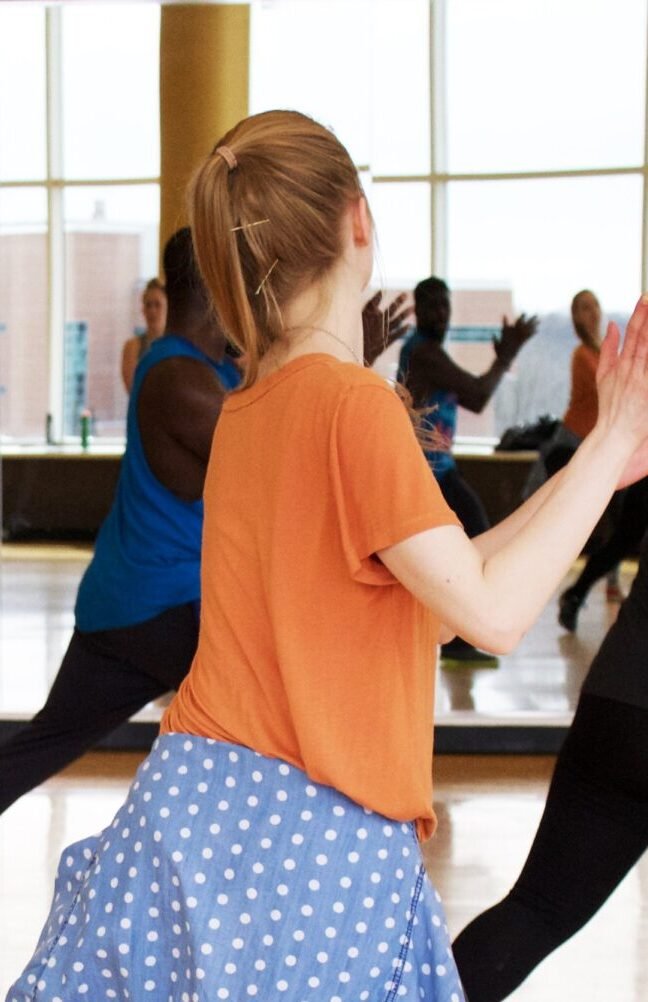
The Power of Visualization Exercises: A Guide to Progressive Muscle Visualization
Introduction
Visualization exercises are a powerful tool for improving mental and physical well-being. They involve using the imagination to create vivid mental images that promote relaxation, reduce stress, and enhance overall well-being. One popular form of visualization exercise is Progressive Muscle Visualization (PMV), which combines relaxation techniques with the visualization of muscle relaxation. In this article, we will explore what PMV is, its benefits, and how it can help with stress and insomnia.
What is Progressive Muscle Visualization?
Progressive Muscle Visualization (PMV) is a relaxation technique that involves systematically tensing and relaxing different muscle groups while simultaneously visualizing the process. By focusing on each muscle group and mentally picturing it relaxing, individuals can experience a deep sense of relaxation and release tension from their bodies. PMV is often used in combination with deep breathing exercises and guided imagery to enhance its effectiveness.
Script of PMV
To practice PMV, find a quiet and comfortable space where you can relax without distractions. Close your eyes and take a few deep breaths to center yourself. Begin by focusing on your toes, tensing the muscles in your feet and then slowly releasing the tension while visualizing the muscles becoming loose and relaxed. Move up through your body, repeating this process with each muscle group, including your legs, abdomen, chest, arms, shoulders, neck, and face. Take your time with each muscle group, allowing yourself to fully experience the relaxation and visualization.
Benefits of Progressive Muscle Visualization
1. Stress reduction: PMV can help reduce stress by promoting relaxation and releasing tension from the body. By visualizing the muscles relaxing, individuals can experience a sense of calmness and tranquility.
2. Muscle relaxation: PMV is particularly effective in promoting muscle relaxation. By systematically tensing and releasing each muscle group, individuals can improve their awareness of muscle tension and learn to let go of it.
3. Improved sleep: PMV can be beneficial for those struggling with insomnia. By practicing PMV before bedtime, individuals can relax their bodies and minds, making it easier to fall asleep and experience a more restful night’s sleep.
4. Increased self-awareness: Through the practice of PMV, individuals can develop a heightened sense of self-awareness. By paying attention to the sensations in each muscle group and visualizing their relaxation, individuals can become more attuned to their bodies and better able to recognize and manage tension and stress.
Progressive Visualization for Stress and Insomnia
Progressive visualization exercises can be particularly helpful for managing stress and insomnia. By combining PMV with specific visualizations, individuals can enhance the relaxation response and promote a sense of calmness.
For stress relief, consider visualizing a peaceful and serene setting, such as a beach or a forest. Imagine yourself in this tranquil environment, feeling the warmth of the sun, hearing the gentle sounds of nature, and experiencing a deep sense of relaxation.
For insomnia, focus on visualizing a comfortable and cozy bedroom. Picture yourself lying in bed, surrounded by soft pillows and blankets. Imagine the feeling of sinking into the mattress and the sensation of your body becoming heavier and more relaxed with each breath.
Conclusion
Progressive Muscle Visualization is a valuable tool for promoting relaxation, reducing stress, and improving overall well-being. By combining muscle relaxation techniques with visualizations, individuals can experience a deep sense of calmness and release tension from their bodies. Whether used for stress relief, insomnia management, or simply to enhance self-awareness, PMV can be a beneficial practice for anyone seeking to improve their mental and physical well-being.
Learn More
Hydrotherapy Exercise: Exploring Progressive Muscle Hydrotherapy
Introduction
Hydrotherapy exercise is a therapeutic approach that utilizes water to promote physical and mental well-being. It has been used for centuries to treat various conditions and improve overall health. One specific type of hydrotherapy exercise is Progressive Muscle Hydrotherapy (PMH), which focuses on the progressive relaxation of muscles in water. In this article, we will delve into the concept of PMH, its benefits, and how it can be used to address stress and insomnia.
Understanding Progressive Muscle Hydrotherapy
Progressive Muscle Hydrotherapy is a technique that involves the systematic contraction and relaxation of muscles in warm water. It was developed as an extension of the Progressive Muscle Relaxation (PMR) technique, which is typically performed on land. The warm water environment of hydrotherapy enhances the effects of muscle relaxation, making it an ideal setting for PMH.
Script of PMR
During a PMH session, an individual performs a series of muscle contractions and relaxations in a specific sequence. The script for PMR may include the following steps:
- Find a comfortable position in the water, ensuring that the body is fully supported.
- Start by tensing the muscles in the toes and feet for a few seconds, then release the tension and allow the muscles to relax.
- Move on to the calves and thighs, tensing and relaxing the muscles in a similar manner.
- Continue this process, gradually working your way up through the body, including the abdomen, chest, arms, and face.
- Focus on each muscle group individually, allowing yourself to fully experience the sensation of relaxation as you release the tension.
Benefits of Progressive Muscle Hydrotherapy
Progressive Muscle Hydrotherapy offers a range of benefits for both physical and mental well-being. Some of the key advantages include:
1. Muscle Relaxation
By systematically tensing and relaxing the muscles, PMH helps to promote deep muscle relaxation. This can be particularly beneficial for individuals experiencing muscle tension, pain, or stiffness.
2. Stress Reduction
PMH is an effective stress management tool. The combination of warm water and muscle relaxation helps to reduce the levels of stress hormones in the body, promoting a sense of calm and relaxation.
3. Improved Sleep
Insomnia can be a result of stress and muscle tension. PMH can help alleviate these factors, making it easier to fall asleep and improving the quality of sleep. The relaxation experienced during PMH can also help individuals who suffer from restless leg syndrome or other sleep-related conditions.
4. Enhanced Circulation
The warm water used in PMH promotes vasodilation, which improves blood circulation. This can have a positive impact on the delivery of oxygen and nutrients to the muscles and other tissues, aiding in their recovery and overall health.
Progressive Hydrotherapy for Stress and Insomnia
Progressive Muscle Hydrotherapy can be specifically tailored to address stress and insomnia. By incorporating PMH into a regular routine, individuals can experience long-term benefits in managing these conditions.
For stress relief, it is recommended to perform PMH in a quiet and peaceful environment. Close your eyes, focus on your breathing, and allow the warm water to soothe your muscles as you progress through the relaxation script.
For insomnia, consider incorporating PMH into your bedtime routine. Perform the muscle relaxation exercises in a warm bath or a heated pool before going to bed. This can help prepare your body and mind for a restful night’s sleep.
Conclusion
Progressive Muscle Hydrotherapy is a valuable approach to promote relaxation, reduce stress, and improve sleep quality. By incorporating PMH into your wellness routine, you can experience the numerous benefits of hydrotherapy exercise in a targeted and effective manner. Remember to consult with a healthcare professional before starting any new exercise program, especially if you have any underlying health conditions.
Learn More
Aromatherapy Exercise: Exploring Progressive Muscle Aromatherapy and its Benefits
Aromatherapy Exercise: Exploring Progressive Muscle Aromatherapy and its Benefits
Aromatherapy exercise is a holistic approach that combines the benefits of aromatherapy and exercise to enhance overall well-being. One such technique is Progressive Muscle Aromatherapy (PMR), which focuses on the relaxation of muscles through a systematic process.
What is Progressive Muscle Aromatherapy?
Progressive Muscle Aromatherapy (PMR) is a technique that involves tensing and then relaxing different muscle groups in the body while simultaneously incorporating essential oils or aromatherapy blends. The process aims to promote physical and mental relaxation, reduce stress, and enhance sleep quality.
The script for a typical PMR session involves the following steps:
- Find a quiet and comfortable space where you can relax.
- Begin by taking a few deep breaths, inhaling the scent of the chosen essential oil or blend.
- Start with the muscles in your feet, tensing them for a few seconds, and then release the tension while focusing on the sensation of relaxation.
- Move up to your calves, thighs, and so on, gradually working your way through each muscle group in your body.
- As you progress, continue to inhale the aroma of the essential oil, allowing it to further enhance the relaxation experience.
- Once you have completed the entire body, take a few moments to enjoy the overall sense of calm and tranquility.
Benefits of Progressive Muscle Aromatherapy Exercise
1. Stress Reduction: PMR helps release tension from the muscles, which in turn promotes relaxation and reduces stress levels. The combination of aromatherapy and muscle relaxation can have a calming effect on the mind and body.
2. Improved Sleep Quality: By incorporating aromatherapy into the muscle relaxation process, PMR can also aid in improving sleep quality. The soothing scents of essential oils can help create a peaceful environment, making it easier to fall asleep and stay asleep throughout the night.
3. Enhanced Mind-Body Connection: PMR encourages individuals to pay attention to their body and its sensations. By focusing on each muscle group and the subsequent relaxation, practitioners can develop a stronger mind-body connection, leading to a greater sense of self-awareness and overall well-being.
4. Muscle Tension Relief: The deliberate tensing and subsequent relaxation of muscles in PMR can help relieve muscle tension and tightness. This can be particularly beneficial for individuals who experience chronic pain or stiffness in certain areas of their body.
Progressive Aromatherapy for Stress and Insomnia
Progressive Muscle Aromatherapy can be specifically tailored to address stress and insomnia-related issues. By incorporating essential oils known for their calming properties, such as lavender or chamomile, into the PMR routine, individuals can experience heightened relaxation and better sleep.
For stress, the combination of muscle relaxation and aromatherapy can help reduce anxiety levels, promote mental clarity, and provide a sense of calm. The soothing scents can trigger the brain’s relaxation response, allowing individuals to unwind and find relief from the pressures of daily life.
In the case of insomnia, Progressive Muscle Aromatherapy can create a bedtime routine that signals the body to prepare for sleep. By practicing PMR with sleep-inducing essential oils, individuals can establish a relaxing ritual that promotes a restful night’s sleep.
Conclusion
Aromatherapy exercise, particularly Progressive Muscle Aromatherapy, offers a unique and effective way to promote relaxation, reduce stress, and improve sleep quality. By combining the benefits of aromatherapy and muscle relaxation, individuals can experience a heightened sense of well-being and a stronger mind-body connection.
Whether you are seeking stress relief, better sleep, or simply a way to unwind, consider incorporating Progressive Muscle Aromatherapy into your wellness routine. Remember to choose essential oils or blends that resonate with you and create a peaceful environment for your aromatherapy exercise sessions.
Learn More
Music and Art Therapy Exercise: A Powerful Tool for Healing and Relaxation
Introduction
Music and art therapy exercise is a form of therapy that combines the healing power of music and art to promote emotional, mental, and physical well-being. This therapeutic approach has gained popularity in recent years due to its effectiveness in reducing stress, anxiety, and promoting relaxation.
Progressive Muscle Music and Art Therapy
One specific technique used in music and art therapy exercise is Progressive Muscle Music and Art Therapy (PMR). PMR is a relaxation technique that involves tensing and relaxing different muscle groups in the body while listening to calming music or engaging in art activities. This exercise helps individuals become more aware of their muscle tension and learn how to release it, leading to a deeper state of relaxation.
The Script of PMR
During a PMR session, a therapist may guide you through a script that focuses on different muscle groups. Here is an example of a PMR script:
“Start by taking a deep breath and exhaling slowly. Now, tighten the muscles in your hands and hold for a few seconds. Feel the tension building up. And now, release the tension and feel the relaxation flowing through your hands. Take a moment to notice the difference between tension and relaxation.”
The script continues, guiding you through various muscle groups in the body, allowing you to experience the contrast between tension and relaxation in each area.
Benefits of Progressive Muscle Music and Art Therapy Exercise
1. Stress Reduction: PMR helps reduce stress by promoting relaxation and releasing muscle tension. It can be particularly beneficial for individuals who experience chronic stress or have difficulty relaxing.
2. Anxiety Relief: Engaging in PMR can help alleviate anxiety symptoms by calming the mind and body. The combination of music and art enhances the therapeutic effect, providing a creative outlet for emotional expression.
3. Improved Sleep: Progressive Muscle Music and Art Therapy can also be beneficial for individuals suffering from insomnia. The relaxation induced by this exercise can help individuals fall asleep faster and experience deeper, more restful sleep.
4. Emotional Release: Music and art have the power to evoke emotions and provide a safe space for emotional expression. Engaging in PMR allows individuals to release pent-up emotions and gain a sense of emotional well-being.
5. Enhanced Self-Awareness: By focusing on different muscle groups and their tension levels, PMR helps individuals develop a greater sense of self-awareness. This increased awareness can extend beyond the session, allowing individuals to recognize and manage stress and tension in their daily lives.
Progressive Music and Art Therapy for Stress and Insomnia
Progressive Music and Art Therapy can be particularly effective in managing stress and insomnia. By combining the therapeutic benefits of music and art with the relaxation techniques of PMR, individuals can experience a profound sense of calm and inner peace.
Listening to soothing music while engaging in art activities such as painting, drawing, or sculpting can further enhance the relaxation response. The creative process allows individuals to express their emotions and thoughts, providing a cathartic experience that promotes healing and stress reduction.
Conclusion
Music and art therapy exercise, particularly Progressive Muscle Music and Art Therapy, offers a unique and powerful approach to healing and relaxation. By combining the therapeutic benefits of music and art with the physical and mental relaxation induced by PMR, individuals can experience numerous benefits, including stress reduction, anxiety relief, improved sleep, emotional release, and enhanced self-awareness. Whether you are seeking relief from stress, anxiety, or insomnia, exploring the world of music and art therapy exercise can be a transformative journey towards improved well-being.
Learn More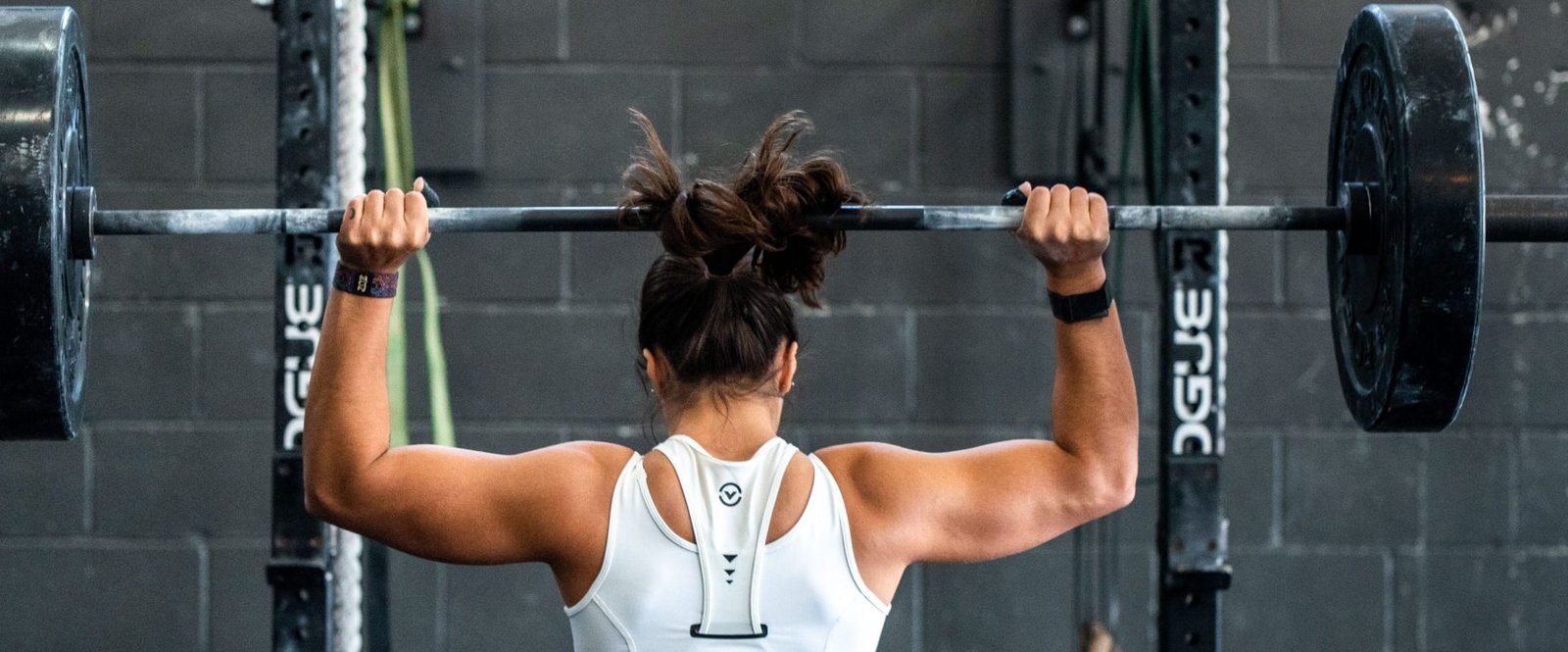
Biofeedback Exercise: Understanding Progressive Muscle Biofeedback
What is Biofeedback Exercise?
Biofeedback exercise is a technique that helps individuals become more aware of their physiological processes and learn to control them. It involves using electronic devices to measure and provide feedback about various bodily functions, such as heart rate, muscle tension, and skin temperature. By receiving real-time information about these functions, individuals can learn to regulate and improve their overall well-being.
What is Progressive Muscle Biofeedback?
Progressive Muscle Biofeedback (PMR) is a specific type of biofeedback exercise that focuses on muscle tension and relaxation. It was developed by Edmund Jacobson, a physician and psychologist, in the early 20th century. PMR involves systematically tensing and then relaxing different muscle groups in the body, with the goal of achieving deep relaxation and reducing overall muscle tension.
The Script of PMR
Here is a simple script to guide you through a Progressive Muscle Biofeedback exercise:
- Find a quiet and comfortable space where you can relax without distractions.
- Lie down or sit in a comfortable position, with your eyes closed.
- Begin by taking a few deep breaths, inhaling slowly through your nose and exhaling through your mouth.
- Focus your attention on your toes. Squeeze them tightly for a few seconds, then release and let them relax completely.
- Continue moving up your body, tensing and releasing each muscle group, including your feet, calves, thighs, buttocks, abdomen, chest, arms, hands, neck, and face.
- As you tense each muscle group, pay attention to the sensations of tension and then the sensations of relaxation as you release the tension.
- Take your time with each muscle group, allowing yourself to fully experience the contrast between tension and relaxation.
- Once you have completed the entire body, take a few moments to simply relax and enjoy the sensation of deep relaxation.
- When you are ready, slowly open your eyes and gently bring your attention back to the present moment.
Benefits of Progressive Muscle Biofeedback Exercise
Progressive Muscle Biofeedback exercise offers several benefits for both physical and mental well-being:
- Reduces muscle tension and promotes relaxation throughout the body.
- Improves blood circulation and reduces blood pressure.
- Enhances body awareness and helps individuals recognize and release chronic muscle tension.
- Reduces symptoms of anxiety, stress, and insomnia.
- Helps manage chronic pain conditions, such as tension headaches and fibromyalgia.
- Improves sleep quality and promotes a sense of calm and well-being.
Progressive Biofeedback for Stress and Insomnia
Progressive Muscle Biofeedback exercise is particularly effective for reducing stress and improving sleep quality. By consciously tensing and relaxing each muscle group, individuals release built-up tension and promote relaxation throughout the body. This technique is especially beneficial for those struggling with insomnia, as it helps calm the mind and prepare the body for restful sleep.
Conclusion
Biofeedback exercise, specifically Progressive Muscle Biofeedback, offers a valuable tool for promoting relaxation, reducing muscle tension, and improving overall well-being. By incorporating PMR into your routine, you can experience the numerous benefits it provides, including stress reduction, better sleep, and enhanced body awareness. Take some time to practice this technique regularly and enjoy the positive impact it can have on your physical and mental health.
Learn More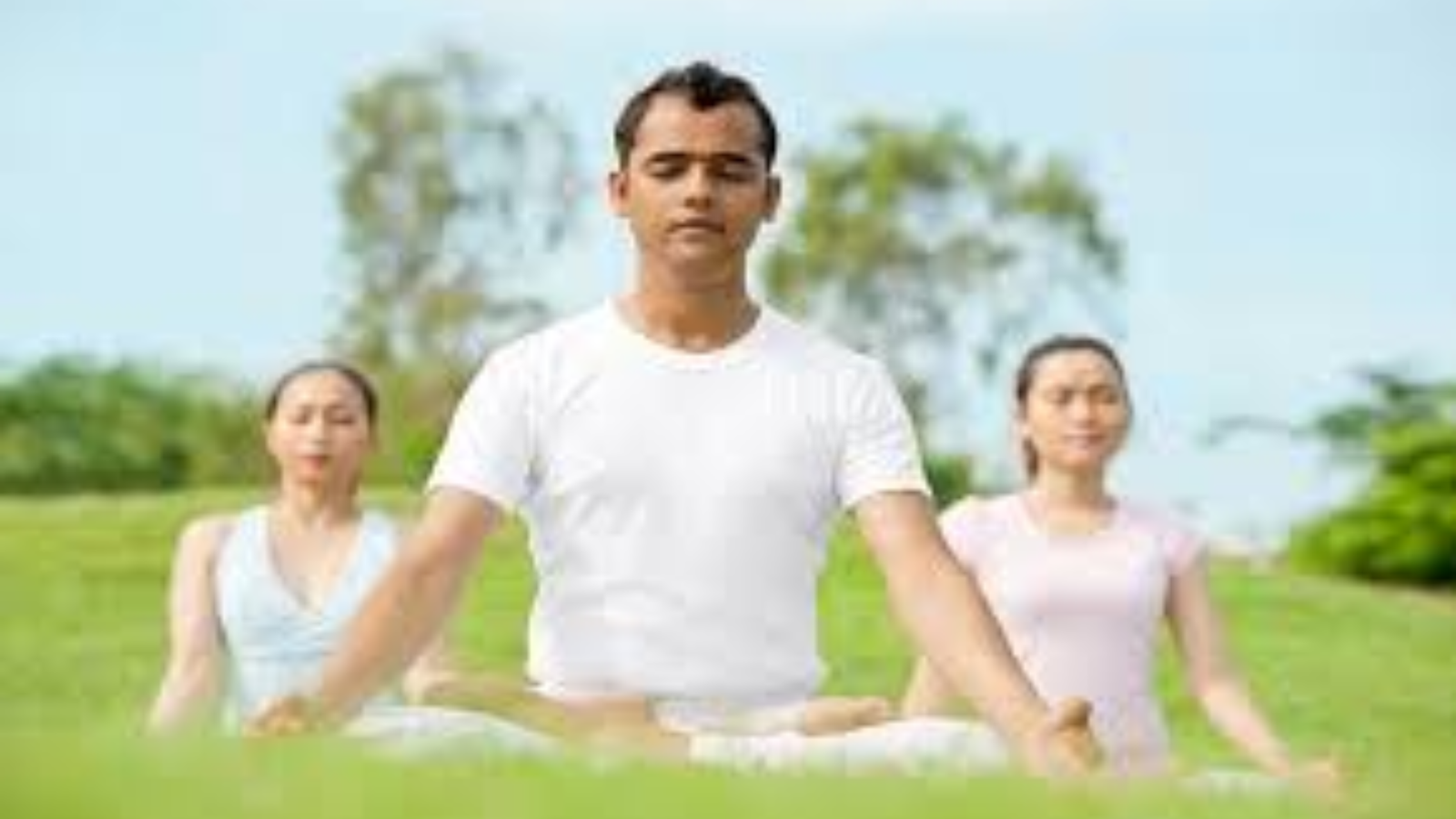
Understanding Yoga Exercise and the Benefits of Progressive Muscle Yoga
What is Yoga Exercise?
Yoga exercise is a holistic practice that originated in ancient India and has gained popularity worldwide. It combines physical postures, breathing techniques, meditation, and ethical principles to promote overall well-being and balance in the body, mind, and spirit.
Yoga exercises are designed to improve flexibility, strength, and balance while also reducing stress and promoting relaxation. The practice focuses on connecting the body and mind through conscious movement and breath control, creating a sense of harmony and tranquility.
What is Progressive Muscle Yoga?
Progressive Muscle Yoga (PMR) is a specific type of yoga exercise that focuses on strengthening and relaxing the muscles through a systematic approach. It involves the conscious contraction and relaxation of different muscle groups in the body, promoting increased body awareness and stress reduction.
The PMR technique was developed by Edmund Jacobson, an American physician, in the early 20th century. It is based on the principle that muscle tension is closely linked to mental and emotional stress. By consciously tensing and then releasing the muscles, PMR aims to release physical and mental tension, promoting a state of deep relaxation and calmness.
The Script of Progressive Muscle Yoga
The practice of Progressive Muscle Yoga typically involves the following steps:
- Find a quiet and comfortable space where you can lie down.
- Close your eyes and take a few deep breaths to center yourself.
- Start with your toes, curling them tightly for a few seconds, then release and relax.
- Move up to your calves, tensing them by pointing your toes towards your body, and then releasing.
- Continue this process, moving through each muscle group in your body, including thighs, buttocks, abdomen, chest, arms, hands, neck, and face.
- As you tense and release each muscle group, focus on the sensations and notice the contrast between tension and relaxation.
- Take deep breaths throughout the practice, allowing your breath to flow naturally and deeply.
- Once you have completed the entire body, lie still for a few moments, enjoying the sense of relaxation and calmness.
- Slowly bring your awareness back to the present moment and gently open your eyes.
Benefits of Progressive Muscle Yoga Exercise
The practice of Progressive Muscle Yoga offers numerous benefits for both the body and mind:
1. Stress Reduction:
By consciously tensing and releasing the muscles, PMR helps release physical and mental tension, reducing stress levels and promoting relaxation.
2. Increased Body Awareness:
Through the practice of PMR, individuals develop a heightened sense of body awareness, allowing them to better recognize and release areas of tension in their bodies.
3. Improved Muscle Strength and Flexibility:
Regular practice of PMR helps improve muscle strength and flexibility, leading to better overall physical performance and reduced risk of injuries.
4. Enhanced Sleep Quality:
PMR can be particularly beneficial for individuals struggling with sleep disorders. The deep relaxation induced by the practice promotes better sleep quality and can help alleviate insomnia.
5. Mental Clarity and Focus:
By promoting relaxation and reducing stress, PMR helps clear the mind, improve concentration, and enhance mental clarity and focus.
6. Emotional Well-being:
Progressive Muscle Yoga can help individuals manage and cope with emotions more effectively, leading to improved emotional well-being and a greater sense of calmness.
Conclusion
Progressive Muscle Yoga is a powerful practice that combines physical and mental benefits. By consciously tensing and releasing the muscles, individuals can experience deep relaxation, stress reduction, improved body awareness, and enhanced overall well-being. Regular practice of PMR can be a valuable addition to one’s yoga routine, promoting both physical and mental health.
Learn More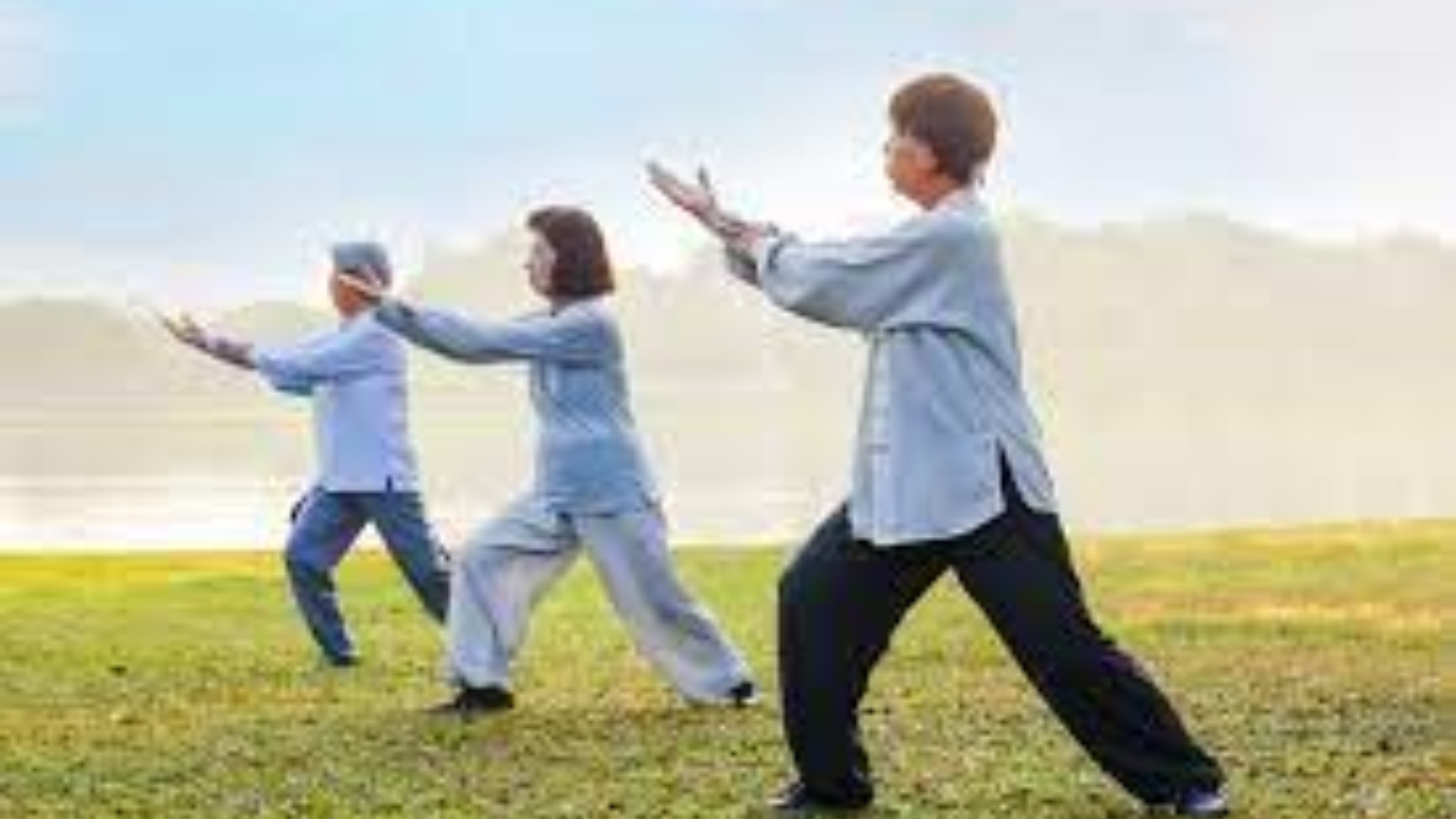
Understanding Progressive Muscle Tai Chi Exercise and Its Benefits
What is Tai Chi Exercise?
Tai Chi is a traditional Chinese martial art that combines slow, flowing movements with deep breathing and mental focus. It is often practiced as a form of meditation in motion, promoting relaxation, balance, and overall well-being.
What is Progressive Muscle Tai Chi?
Progressive Muscle Tai Chi is a variation of the traditional Tai Chi practice that incorporates elements of Progressive Muscle Relaxation (PMR). PMR is a technique that involves tensing and then relaxing specific muscle groups to promote deep relaxation and reduce muscle tension.
Script of Progressive Muscle Tai Chi
In Progressive Muscle Tai Chi, practitioners follow a scripted sequence of movements that involve both Tai Chi postures and PMR techniques. The script guides individuals to tense and relax different muscle groups while maintaining the slow, flowing movements of Tai Chi.
Here is an example script of Progressive Muscle Tai Chi:
Begin by standing in a relaxed and comfortable position, feet shoulder-width apart. Take a deep breath in, and as you exhale, gently tighten the muscles in your feet and toes. Hold the tension for a few seconds, and then release, allowing the muscles to relax completely.
Next, bring your attention to your calves and thighs. Slowly tighten the muscles in your lower legs and thighs, feeling the tension build. Hold for a few seconds, and then release, allowing the muscles to relax and soften.
Continue this process, moving up through your body, tensing and relaxing each muscle group. Focus on your abdomen, chest, shoulders, arms, hands, neck, and face. With each tension and release, notice the sensations in your body and let go of any tension or stress.
Throughout the script, maintain the slow, flowing movements of Tai Chi, allowing your body to move in harmony with your breath. Pay attention to the sensations of relaxation and the gentle rhythm of your movements.
Benefits of Progressive Muscle Tai Chi Exercise
1. Deep Relaxation: By combining the relaxation techniques of PMR with the meditative movements of Tai Chi, Progressive Muscle Tai Chi promotes deep relaxation and helps to reduce stress and anxiety.
2. Muscle Tension Relief: The tensing and releasing of specific muscle groups in Progressive Muscle Tai Chi helps to release built-up tension and improve overall muscle flexibility and strength.
3. Improved Balance and Coordination: The slow, controlled movements of Tai Chi in Progressive Muscle Tai Chi enhance balance and coordination, contributing to better overall physical stability.
4. Mind-Body Connection: Progressive Muscle Tai Chi helps to strengthen the mind-body connection by promoting mindfulness and focus on the present moment. This can lead to improved mental clarity and overall well-being.
Progressive Tai Chi for Stress and Insomnia
Progressive Muscle Tai Chi can be particularly beneficial for individuals experiencing high levels of stress or struggling with insomnia. The combination of relaxation techniques, gentle movements, and focused breathing helps to calm the mind, reduce stress hormones, and promote better sleep quality.
By practicing Progressive Muscle Tai Chi regularly, individuals can experience a sense of calm, improved sleep patterns, and increased overall well-being.
Conclusion
Progressive Muscle Tai Chi is a unique blend of Tai Chi and Progressive Muscle Relaxation techniques. It offers numerous benefits, including deep relaxation, muscle tension relief, improved balance and coordination, and a strengthened mind-body connection.
Whether you are seeking stress relief, better sleep, or overall wellness, incorporating Progressive Muscle Tai Chi into your routine can be a valuable addition to your self-care practices.
Learn More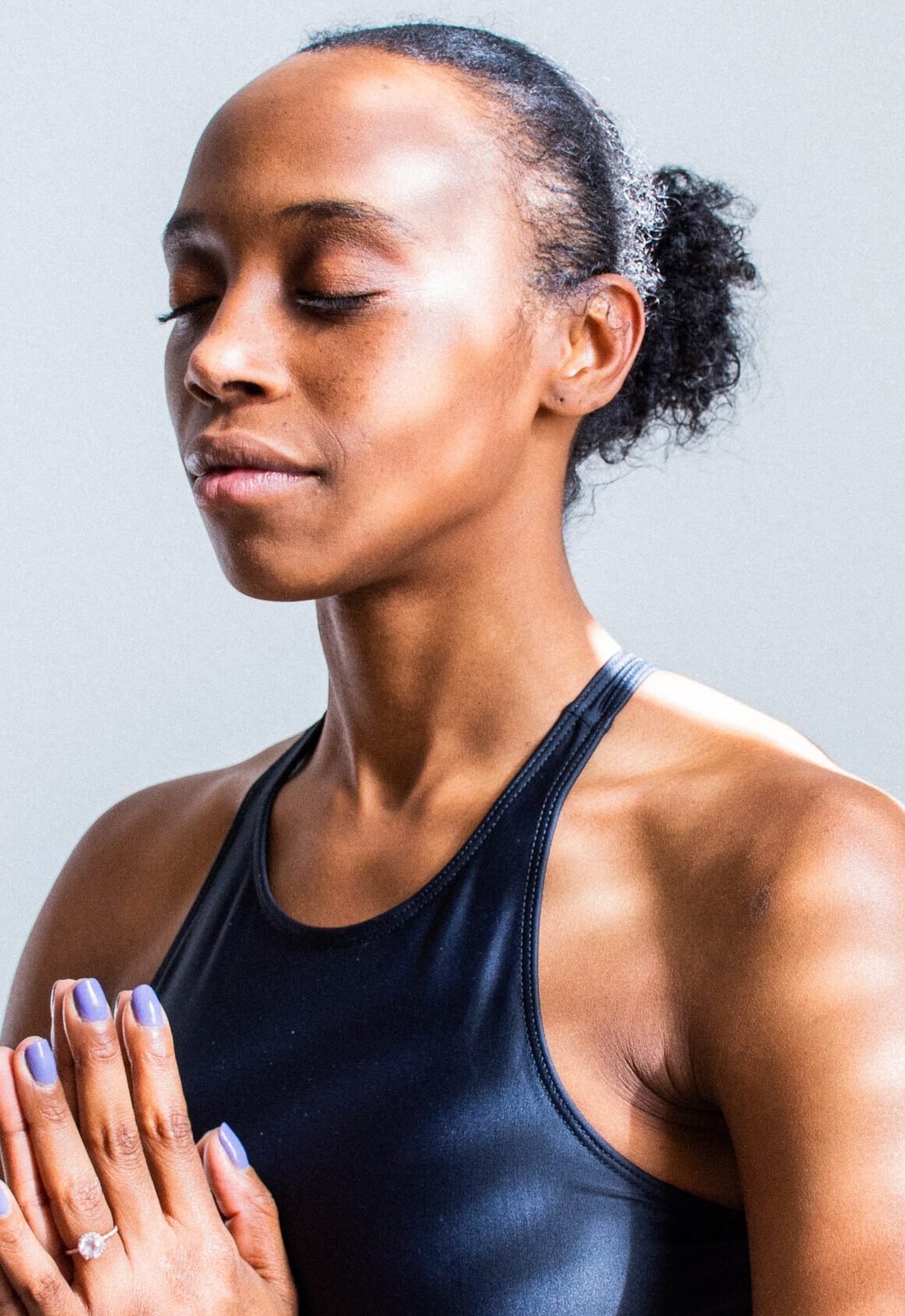
Understanding Progressive Muscle Meditation Exercise and Its Benefits
What is Meditation Exercise?
Meditation exercise is a practice that involves training the mind to focus and redirect thoughts. It is often used to promote relaxation, reduce stress, and enhance overall well-being. There are various forms of meditation, each with its own techniques and benefits.
What is Progressive Muscle Meditation?
Progressive Muscle Meditation (PMR) is a specific type of meditation exercise that focuses on relaxing the body and mind through systematic muscle relaxation. It was developed by physician Edmund Jacobson in the early 20th century and has since gained popularity for its effectiveness in reducing stress and promoting better sleep.
Script of PMR
Progressive Muscle Meditation involves tensing and relaxing different muscle groups in a specific sequence. Here is a simple script to guide you through the process:
- Find a quiet and comfortable space where you can sit or lie down.
- Close your eyes and take a few deep breaths to relax.
- Start by focusing on your feet. Slowly tense the muscles in your feet, hold for a few seconds, and then release the tension, allowing the muscles to relax completely.
- Move your attention up to your calves. Repeat the process of tensing and relaxing the muscles in your calves.
- Continue this pattern, moving through each muscle group in your body, including your thighs, buttocks, abdomen, chest, back, shoulders, arms, hands, neck, and face.
- As you progress, pay attention to the sensations of tension and relaxation in each muscle group.
- Take your time and repeat the process as many times as you need to fully relax your body and mind.
Benefits of Progressive Muscle Meditation
Progressive Muscle Meditation offers numerous benefits for both physical and mental well-being. Some of the key benefits include:
1. Stress Reduction:
PMR helps release physical and mental tension, reducing stress levels and promoting a sense of calmness and relaxation.
2. Improved Sleep:
By relaxing the body and mind, PMR can help improve sleep quality, making it an effective technique for those struggling with insomnia or sleep disorders.
3. Muscle Relaxation:
Regular practice of PMR can help relieve muscle tension and promote overall muscle relaxation, reducing the risk of muscle-related pain and discomfort.
4. Enhanced Mind-Body Connection:
Progressive Muscle Meditation allows individuals to develop a deeper awareness of their body and the connection between physical sensations and mental states.
5. Anxiety and Depression Management:
Studies have shown that PMR can be effective in reducing symptoms of anxiety and depression, providing individuals with a tool to manage their mental health.
Progressive Relaxation for Stress and Insomnia
Progressive Muscle Meditation is particularly beneficial for managing stress and insomnia. By systematically relaxing the muscles, it helps release physical and mental tension, allowing the body and mind to unwind and prepare for restful sleep. The sequential nature of PMR also helps divert attention away from racing thoughts and promotes a sense of calmness.
Conclusion
Progressive Muscle Meditation is a powerful technique for promoting relaxation, reducing stress, and improving sleep. By systematically relaxing the muscles, it allows individuals to release tension and achieve a state of deep relaxation. With regular practice, PMR can become a valuable tool for managing anxiety, depression, and overall well-being.
Learn More
Understanding Astropsychological Remedies and Effective Treatments
Introduction
Astropsychological remedies refer to the use of various techniques and treatments to address psychological and emotional issues that may be affecting an individual’s overall well-being. These remedies focus on the connection between astrology and psychology, aiming to provide relief and promote mental and emotional healing.
Reasons for Astropsychological Remedies
There are several reasons why individuals may seek astropsychological remedies:
- Stress and Anxiety: Many people experience stress and anxiety due to various factors such as work pressure, relationship issues, or financial concerns. Astropsychological remedies can help individuals manage and reduce these feelings of stress and anxiety.
- Depression: Depression is a common mental health condition that can significantly impact a person’s quality of life. Astropsychological remedies can provide support and help individuals cope with their depressive symptoms.
- Self-Exploration and Personal Growth: Astropsychological remedies can assist individuals in gaining a deeper understanding of themselves, their strengths, and their weaknesses. This self-exploration can lead to personal growth and development.
- Relationship Issues: Relationship problems can cause significant emotional distress. Astropsychological remedies can offer guidance and support to individuals experiencing difficulties in their relationships.
Treatments for Astropsychological Remedies in Beauty Parlors
Beauty parlors often offer astropsychological remedies as part of their services, recognizing the importance of addressing inner well-being alongside physical appearance. Some common treatments include:
- Astrology Consultations: Beauty parlors may provide astrology consultations where individuals can gain insights into their personality traits, strengths, and weaknesses based on their astrological birth chart. This can help in understanding oneself better and making informed decisions.
- Crystal Healing: Crystal healing involves the use of specific crystals to balance and align the body’s energy centers. This treatment aims to promote emotional healing and restore inner harmony.
- Aromatherapy: Aromatherapy utilizes essential oils to enhance relaxation, reduce stress, and uplift mood. Beauty parlors may offer aromatherapy sessions to provide a calming and rejuvenating experience.
- Meditation and Mindfulness: Meditation and mindfulness practices are effective in reducing anxiety, improving focus, and promoting overall well-being. Beauty parlors may offer guided meditation sessions or mindfulness workshops to help individuals cultivate a sense of inner peace.
Home Self-Treatment for Astropsychological Remedies
While beauty parlors provide professional treatments, there are also self-treatment options that individuals can practice at home. These include:
- Journaling: Writing in a journal can be a therapeutic way to express emotions, gain clarity, and reflect on one’s thoughts and feelings.
- Deep Breathing Exercises: Deep breathing exercises help activate the body’s relaxation response, reducing stress and promoting a sense of calm.
- Yoga and Exercise: Engaging in physical activity, such as yoga or exercise, releases endorphins, which are natural mood-boosting chemicals.
- Positive Affirmations: Repeating positive affirmations can help rewire negative thought patterns and promote self-confidence and positivity.
Astropsychological Remedies: A Holistic Approach
Astropsychological remedies provide a holistic approach to mental and emotional well-being. By combining astrology, psychology, and various therapeutic techniques, these remedies aim to address the root causes of emotional distress and promote overall healing. Whether seeking professional treatments at beauty parlors or practicing self-care at home, individuals can benefit from incorporating astropsychological remedies into their wellness routines.
Remember, it’s essential to consult with professionals or experts in astropsychological remedies to ensure the most effective and suitable treatments for your specific needs.
Learn More
